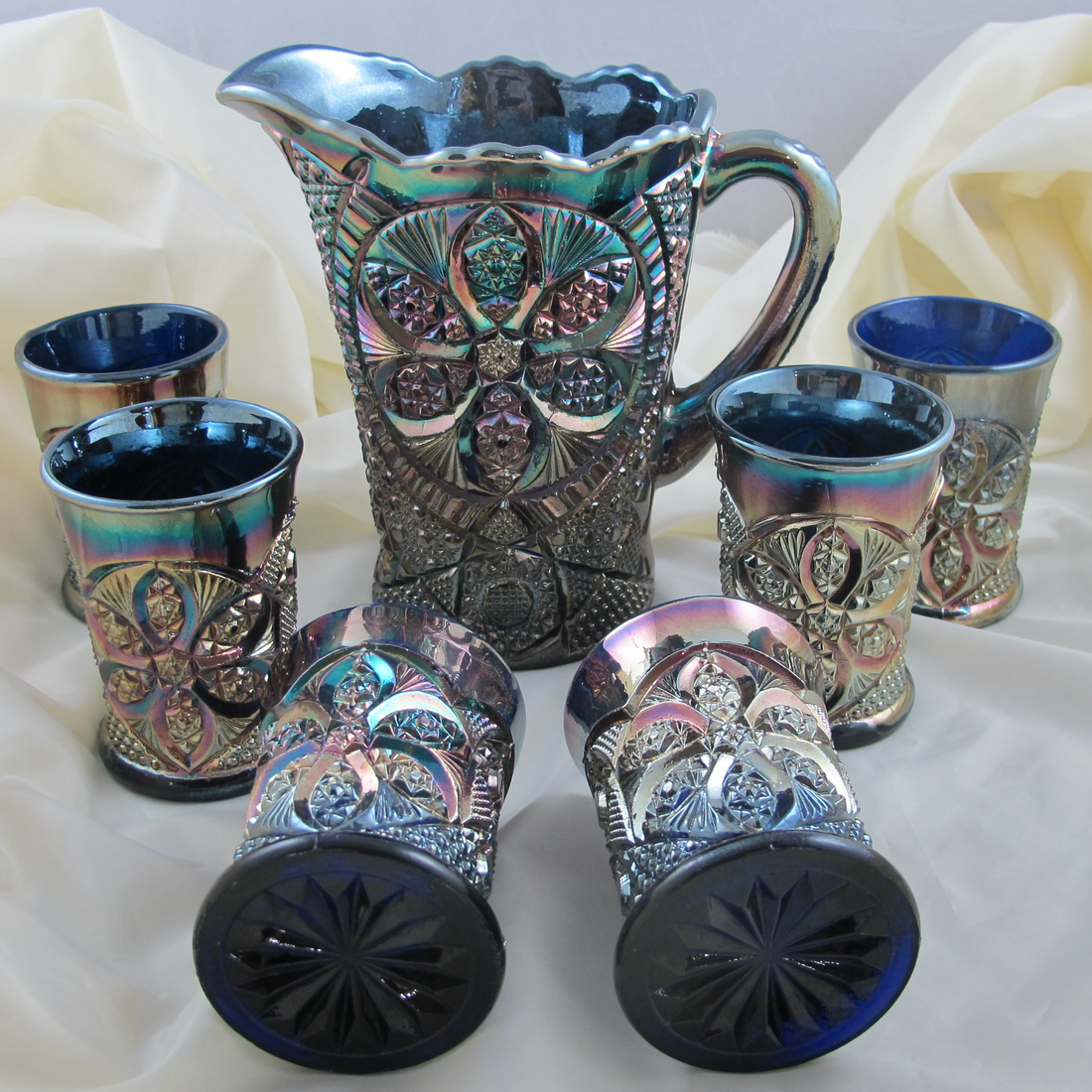Blue Carnival Glass: The Star of Your Vintage Collection

Blue carnival glass has dazzled collectors for over a century with its shimmering, iridescent hues. From Fenton blue carnival glass to rare patterns like Peacock at the Fountain, this vintage carnival glass adds charm, color, and history to any collection. Whether you’re hunting for authentic blue carnival glass or learning its value, this guide has you covered.
A Brief History of Blue Carnival Glass
Carnival glass first appeared on the scene in the early 1900s, ushering in a more affordable way to own beautiful pieces of glass. When it came to companies like Fenton, Northwood, and Imperial, mass production allowed them to meet the rising demands as it grew in popularity. Today, vintage carnival glass is highly sought after... And blue carnival glass is one of the more popular shades to hunt for by collectors.
Fun Fact: The name “carnival glass” came later, because in the 1920s and ’30s, you could actually win pieces at fairs and carnivals as prizes. Imagine tossing a ring and scoring a shimmering blue bowl. Honestly, that’s the kind of fair game we’d all line up for.
How Much is Blue Carnival Glass Worth?
Before you go auctioning off your soul to start collecting, let's talk about how you can buy blue carnival glass. Common pieces typically range from $20-$50, while rarer patterns can fetch into the hundreds. What matters most is a blend of condition, pattern, and the manufacturer that originally produced the piece.

Popular Blue Carnival Glass Patterns to Collect
If you're looking for a real show-stopper, these are some highly sought-after blue carnival glass patterns:
- Peacock at the Fountain – Northwood’s showpiece, rich in detail
- Captive Rose – Fenton blue carnival glass that's as elegant as it is hard to find.
- Hobstar & Feather – Sparkling with geometric brilliance
- Grape & Cable – A classic design that comes in endless forms.
How to Identify Authentic Blue Carnival Glass
If you're wondering how to identify carnival glass, here's a few tips and tricks.
- The iridescence test: Pay attention to how the piece shines. Real carnival glass shifts with the light and will almost appear like oil on water.
- The weight factor: Vintage carnival glass was made to last, meaning it will typically feel heavier and come with a smooth finish.
-
Look for marks: Some companies left telltale signatures on their pieces, though not always
. -
Ch eck wear: Genuine vintage pieces may have subtle signs of use on the base or edges.
Where to Find Blue Carnival Glass Bargains
- Thrift stores & flea markets: The thrill of finding a $10 vase that’s worth five times as much? Priceless
- Estate sales: Entire collections sometimes surface when homes are cleared out, making it easier to buy blue carnival glass
- Online marketplaces: Great for hunting--but always ask for close-up photos before making a purchase.
Tips for Collecting and Displaying Blue Carnival Glass
Here’s where your collector instincts need to kick in. Real vintage blue carnival glass has a richness and depth that reproductions often lack. Run your fingers along the edges because older pieces tend to have a bit more weight and smoother finishing. Look for company marks when possible (though not all pieces were marked). And pay attention to the iridescence: it should look like oil on water, shifting with the light.
Final Thoughts
Blue carnival glass isn’t just something you keep on a shelf—it’s a conversation starter, a piece of history, and a reminder that a bit of shine never hurt anyone. Whether you’re building a collection or want a single statement piece, this glass is proof that vintage doesn’t have to be stuffy. It can sparkle, glow, and absolutely command attention.
Don't forget to browse our catalog to discover what treasures are currently in stock!
FAQ: Blue Carnival Glass
A: Blue carnival glass is a type of vintage pressed glass known for its iridescent, shimmering finish. Popularized by makers like Fenton, Northwood, and Imperial, it was widely produced in the early 1900s
A: Check for shifting iridescence under light, weight and smooth finishing, subtle company marks, and signs of wear on bases or edges
A: Value depends on age, pattern, manufacturer, and condition. Common pieces may sell for $20–$50, while rare patterns can fetch hundreds
A: Look in thrift stores, flea markets, estate sales, online marketplaces like Etsy or eBay, and collector shows.



